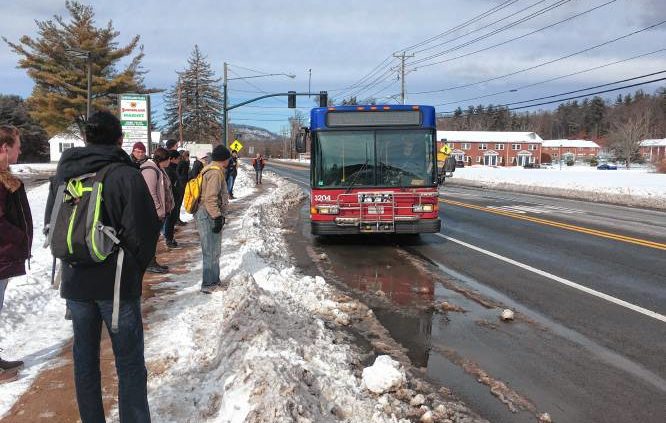Special Recognition: RTA Task Force
TASK FORCE ON REGIONAL TRANSIT AUTHORITY PERFORMANCE & FUNDING
by Astrid Glynn
PROBLEM STATEMENT
Outside Greater Boston, 15 Regional Transit Authorities (RTAs) provide public transportation to Massachusetts residents. For those who must rely on public transit, RTAs are often the only option. However, RTA ridership declined by 9% from 2016 to 2018. A host of factors— shifting demographics, climate change, new travel options such as Uber and Lyft, higher levels of automation, telecommuting and e-commerce—create uncertainty about the future of mobility.1,2 To thrive RTAs not only need stable funding sources but must find ways to improve and innovate.
The Task Force’s recommendations, across five categories, included:
Investment and Performance
RTAs should receive predictable increases in state operating assistance starting in 2020, but also be required to adopt performance targets for ridership, customer service and satisfaction, asset management, and financial performance.
Accountability
RTAs should report on recommended metrics quarterly to MassDOT, and MassDOT and the RTAs should reinvigorate an existing legally required body, the RTA Council, to sustain the momentum of the Task Force.
Service Decisions
RTAs should periodically update their Comprehensive Regional Transit Plans to identify where riders are, target expansion to demonstrated need, and identify partnerships. The Task Force recommended pilot programs to test innovative transit delivery models, increase cross-border services for communities that sit on the border of two RTAs, enhance access to rural services, improve the reliability of paratransit service, and adopt fare policies that include regular, equitable, and modest fare adjustments.
Quality of Service
To improve the transparency of decision-making, RTAs should use social media to increase feedback and include the public in planning new projects, fare changes, and service expansion and redesign, and maximize multimodal connectivity to cut travel times for commuters.
Environmental Sustainability
The RTAs and MassDOT should collaborate to determine the mode shift that will help Massachusetts meet its goal to reduce greenhouse gas emissions (GHG) 40% by 2040. The Task Force urged RTAs to change to purchasing zero-emission buses by 2035.
OUTCOMES
At the time of the Task Force’s final report, the House and Senate were preparing for the budget cycle. The Commonwealth of Massachusetts has since passed the Fiscal Year 2020 Budget Act which became law on July 31, 2019. The resulting increase in RTA funding requires the RTAs to establish performance metrics, baselines and targets in a Bilateral Memorandum of Understanding with MassDOT. Additionally, acting on the recommendation to reinvigorate the RTA Council, MassDOT convened the first meeting on April 30, 2019.
2019 Better Government Comp… by Pioneer Institute on Scribd
REFERENCES
- Commission on the Future of Transportation in the Commonwealth. 2018. Choices for Stewardship: Recommendations to Meet the Transportation Future – VOLUME I. The Commonwealth of Massachusetts. Pgs. 1–74.
- Polzin, S.E., Godfrey, J. 2019. Understanding Ridership Trends in Transit. Florida Department of Transportation, Freight Logistics and Passenger Operations, Transit Office. Pgs. 1–280.
3. Task Force of Regional Transit Authority Performance and Funding. 2019. A Vision for the Future of Massachusetts’ Regional Transit Authorities. Massachusetts Department of Transportation, Rail & Transit Division. Pgs. 1–75.




Leave a Reply
Want to join the discussion?Feel free to contribute!